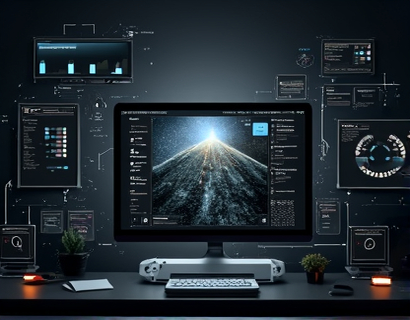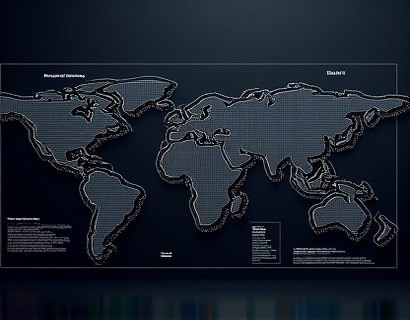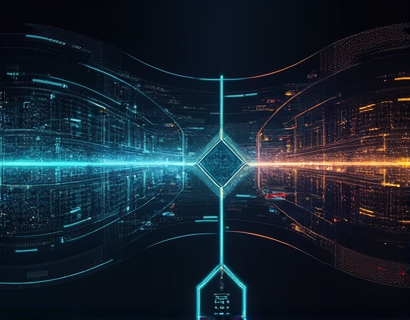Transforming Construction Project Management with AI Chat Interfaces
In the rapidly evolving landscape of construction, professionals and project managers face numerous challenges that can impact the success of their projects. From managing complex workflows to staying updated on industry trends, the need for efficient and reliable information sources is paramount. An innovative solution emerging in this sector is the AI chat interface, designed to provide instant expert insights on build services and industry trends. This technology has the potential to revolutionize construction project management by streamlining decision-making processes and enhancing workflow efficiency.
Understanding AI Chat Interfaces in Construction
An AI chat interface is a sophisticated tool that leverages artificial intelligence to engage in natural language conversations with users. In the context of construction, these interfaces are tailored to understand and address the specific needs of professionals and project managers. By integrating advanced algorithms and machine learning models, these chat interfaces can process vast amounts of data related to build services, project management techniques, and industry trends, offering users instant and accurate information.
Instant Expert Insights
One of the most significant advantages of AI chat interfaces in construction is their ability to provide instant expert insights. Traditional methods of seeking expert advice often involve lengthy consultations, research, and communication with multiple stakeholders. With an AI chat interface, users can receive timely and relevant guidance directly within their workflow. For instance, a project manager can ask about the best practices for site safety, and the AI will provide detailed responses based on the latest industry standards and regulations.
Enhancing Decision-Making
The construction industry is inherently complex, with numerous variables affecting project outcomes. AI chat interfaces simplify this complexity by offering data-driven insights that support informed decision-making. Whether it's selecting the most cost-effective materials, optimizing resource allocation, or predicting potential delays, these interfaces provide actionable recommendations. This not only speeds up the decision-making process but also reduces the risk of errors and misjudgments.
Streamlining Workflow Efficiency
Efficiency is a critical factor in construction project management. AI chat interfaces can significantly enhance workflow efficiency by automating routine tasks and providing real-time information. For example, a user can ask about the status of a specific subcontractor or inquire about the latest updates on building codes. The AI can quickly retrieve this information from its extensive database, allowing project managers to focus on higher-level tasks without interruption.
Access to Comprehensive Knowledge Base
The knowledge base of an AI chat interface in construction is vast and continuously updated. It encompasses a wide range of topics, including but not limited to, construction techniques, material properties, regulatory compliance, and market trends. This comprehensive resource ensures that users have access to the most current and relevant information, enabling them to stay ahead in a dynamic industry. Whether a user is a seasoned professional or new to the field, the AI chat interface serves as a valuable learning tool.
User-Friendly Interaction
The design of AI chat interfaces prioritizes user experience, making complex information easily accessible. Through natural language processing, these interfaces understand and respond to user queries in a conversational manner. This intuitive interaction reduces the learning curve and encourages frequent use, leading to better integration of expert insights into daily operations. Users can engage with the AI using simple text inputs, making it a seamless addition to their workflow.
Case Studies and Real-World Applications
Several construction companies have already begun implementing AI chat interfaces to improve project management. One notable example is a large-scale infrastructure project where the AI chat interface was used to monitor and optimize resource allocation. By providing real-time updates on material availability and supplier performance, the AI helped the project team make swift adjustments, resulting in a 15% reduction in project costs and a 10% decrease in completion time.
Another case involves a mid-sized construction firm that integrated an AI chat interface to enhance site safety. The AI provided regular updates on safety regulations and best practices, along with personalized recommendations based on the project's specific needs. This proactive approach led to a significant reduction in safety incidents and improved overall site safety culture.
Challenges and Considerations
While the benefits of AI chat interfaces in construction are clear, there are several challenges and considerations to keep in mind. One major concern is the accuracy and reliability of the information provided. To ensure this, the AI must be trained on high-quality, up-to-date data sources and continuously monitored for performance. Additionally, the integration of AI chat interfaces into existing systems requires careful planning and technical expertise to avoid disruptions.
Another consideration is user adoption. For the AI chat interface to be effective, users must be willing to engage with the technology. This can be facilitated through training sessions, user-friendly design, and demonstrating clear benefits. It's also important to address privacy and security concerns, ensuring that sensitive project data is protected.
Future Trends and Developments
The future of AI chat interfaces in construction looks promising, with ongoing advancements in AI technology and increasing industry adoption. One emerging trend is the integration of augmented reality (AR) with AI chat interfaces, creating a more immersive and interactive experience for users. For example, a project manager could use AR to visualize construction plans while receiving real-time insights and recommendations from the AI.
Another area of development is the enhancement of predictive analytics capabilities. By analyzing historical data and current project metrics, AI chat interfaces can forecast potential issues and suggest proactive measures. This predictive functionality can further optimize project planning and execution, leading to more successful outcomes.
Conclusion
The integration of AI chat interfaces in construction project management represents a significant leap forward in the industry. By providing instant expert insights, streamlining decision-making, and enhancing workflow efficiency, these tools empower professionals and project managers to tackle challenges more effectively. As the technology continues to evolve, its role in shaping the future of construction will only become more prominent. Embracing AI chat interfaces can be a strategic move for any construction organization looking to stay competitive and innovative in a rapidly changing market.









































